Ultralight Largemouth
Scaling down your bass tackle means more bites, bigger fights, and extra fun.
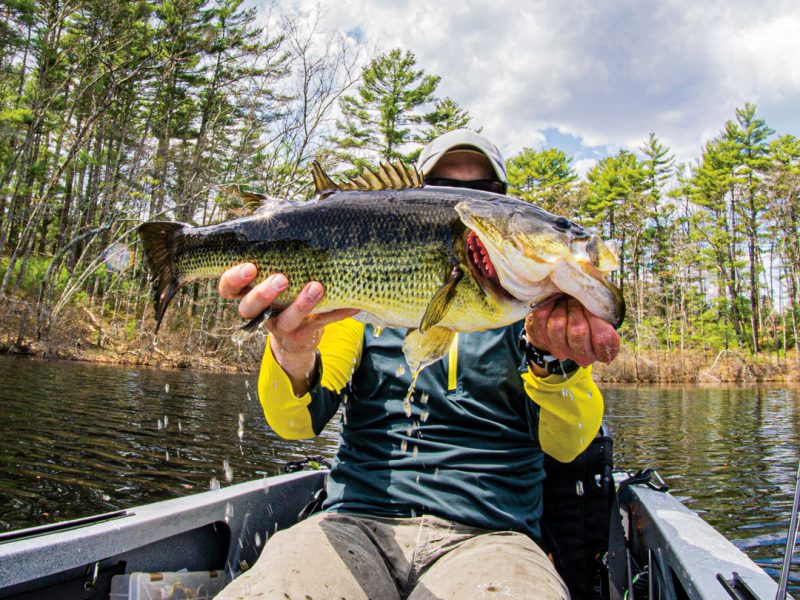
It’s mid-April, 8 pm. The scraping noise of brush on my waders silences the peepers as I half climb, half slide down the bank. They’ve been sporadically calling all week, but the full chorus hasn’t hit its stride yet. The pond is still cold enough that it cuts through my waders and fleece pants, making me suck in my breath, but the air is warm and humid—there’s more May in it than March. A touch of rosy light still colors the sky, and there’s no doubt the days are starting to stretch. I feel a sudden twinge of anticipation for the long season to come, and it starts with ultralight largemouth bass fishing.

I aim my first cast of the night directly parallel to the shore. I surmise that the fish are in tight after a day of bright sun and warm temperatures because they are drawn to the tepid shallows like hounds on the scent. My casts soar 30 yards, and I’m able to cover an entire stretch of woody bank with my wake bait. It plunks along as I reel exceedingly slow. Somewhere in the distance, a barred owl breaks into the traditional “who-cooks-for-you,” adding a jarringly loud shriek to the end of the call. Coyotes erupt in reply somewhere on the opposite bank, cajoling each other happily for more than a minute. Spring is here, and everyone is feeling it.
The fish feel it too—in their stomachs. Halfway back to me, I hear a glug as a bass slurps down the lure, with no splash or attack. Had I not heard it, I would have missed the hookset since I’d felt nothing. However, as soon as I set the hook, the fish makes a run into deeper water, my drag sings a sweet one-note song of its own, and the owl calls again in echo.
Before I can regain any line, the fish jumps twice, then it’s straight into another short run. There’s a half-minute standoff as I get my rod up high, trying to get the best angle to prevent a break-off on numerous boulders and stumps. All progress—by the fish or by me—ceases for a time, then I slowly win the war of wills. With occasional ticks of the drag clicker, the fish slides toward shore. Once close enough to grab, it makes one more desperate tail-walk, and I’m forced to drop my rod tip as if I’m fighting a tarpon. I watch the fish dance, feeling my heartrate spike, but it stays on.
Hesitantly lifting the rod again, I use pressure to drift the fish right at me without reeling at all. Knowing it’s a bit of a no-no, I high-stick the rod, gingerly grabbing the line. I then slip my hand along it to the leader and find the fish’s jaw, letting out a noise that’s half relief and half quiet cheer.
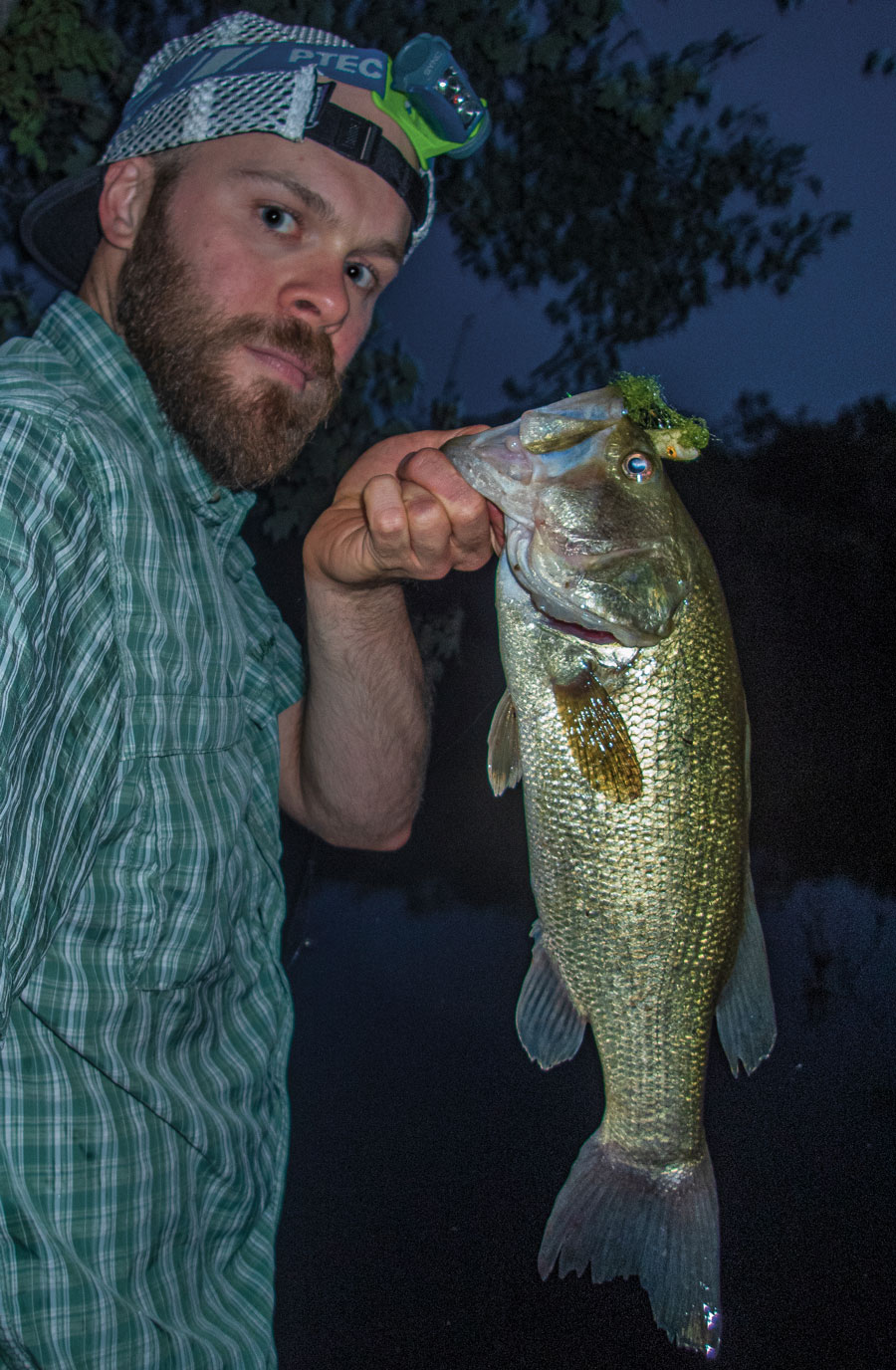
The fish is probably in the mid-5-pound range, and I nabbed it on a 6-foot ultralight trout rod with 6-pound-test braided line. The fight was—to use a cliché—pretty epic. And while this fish ultimately proved to be the biggest on this particular night, it was one of more than a dozen bass landed and many more lost. It’s a wonderful, easy spring night, with loads of action and more than a few laughs as every fish jumps maniacally and fights with full vigor against the ultralight gear. I head home content, knowing that the best is yet to come.
The Big, The Bad, and The Dainty
If you follow the world of bass fishing, you’re aware that the hot trend right now is giant swimbaits. It’s wild seeing fishermen throwing 15- to 20-inch baits in excess of 12 ounces. To be honest, this style of bass fishing is pretty exciting, and I see the appeal. However, I think the intensity of the swimbait “craze” has drowned out everything else for many bass anglers, and there is the danger of finding oneself caught up in “having” to use $100 lures and rods rated to 10 ounces.
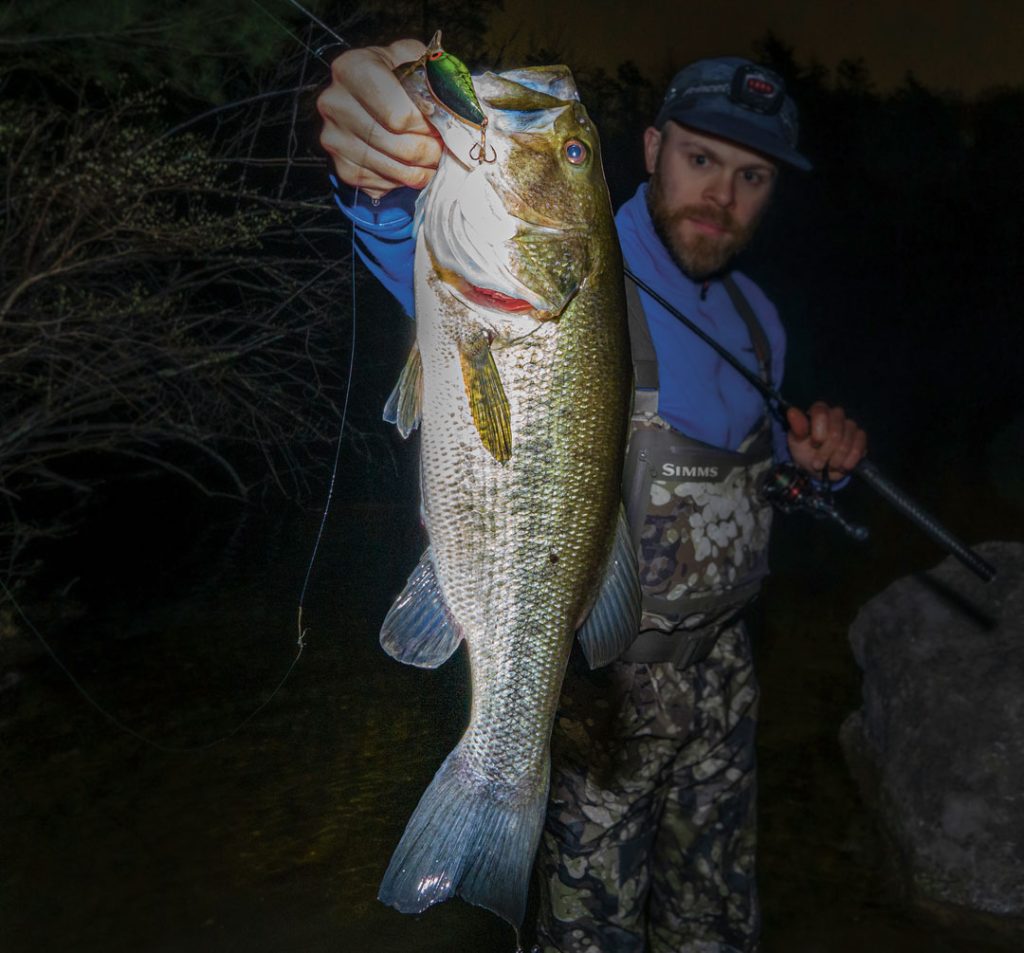
Let me offer an alternative, equally fun, and very exciting option to mix into your spring repertoire—ultralight fishing for lunkers. For me, this involves rods under 6 feet rated to less than ½ ounce, and line in the 2- to 8-pound range (depending on whether you’re using mono or braid).
My father and I were very early adopters of kayak fishing, and we found an ultralight rod, 4-pound line, and a kayak a perfectly matched combination, and we’ve never looked back. Some anglers view ultralight fishing as inferior or delicate, but after more than 25 years, I can attest that it’s not wimpy, it doesn’t have to be an excuse to catch small fish, and it’s crazy fun!
There is no doubt that the theories and tactics used by giant swimbait anglers are proven. Largemouth bass are titanic predators that attack and eat large prey like full-size herring, ducklings, one-pound bullfrogs, etc. So then, why use an ultralight setup for bass? This is a simple question with a complicated answer that will be different for everyone.
I believe most bass anglers are looking for a mix of action and size in their fishing while getting the maximum enjoyment out of their time on the water. Ultralight largemouth bass fishing is one of the best ways to do this, and I think the downsides of ultralight gear are exaggerated. The fish-fighting power and casting ability of even the lightest rods is more than sufficient for many applications. I have no trouble using my ultralight gear to put plenty of 5- to 6-pound bass on the scale from shore, kayak, or boat each season, and my best fish exceeds 8 pounds on 6-pound braid. I’ve even yanked 4- and 5-pounders out of heavy, lily-pad-clogged shallows. Have I lost a few serious fish along the way because of the gear? Sure. Could I catch more 7- and 8-pounders with “normal” or heavy gear? Sure I could! However, I find it extremely dull to crank in 2- to 4-pound largemouth on heavy gear, filtering through those fish to get to a 6-pounder. I’d rather have fun with every fish along the way.
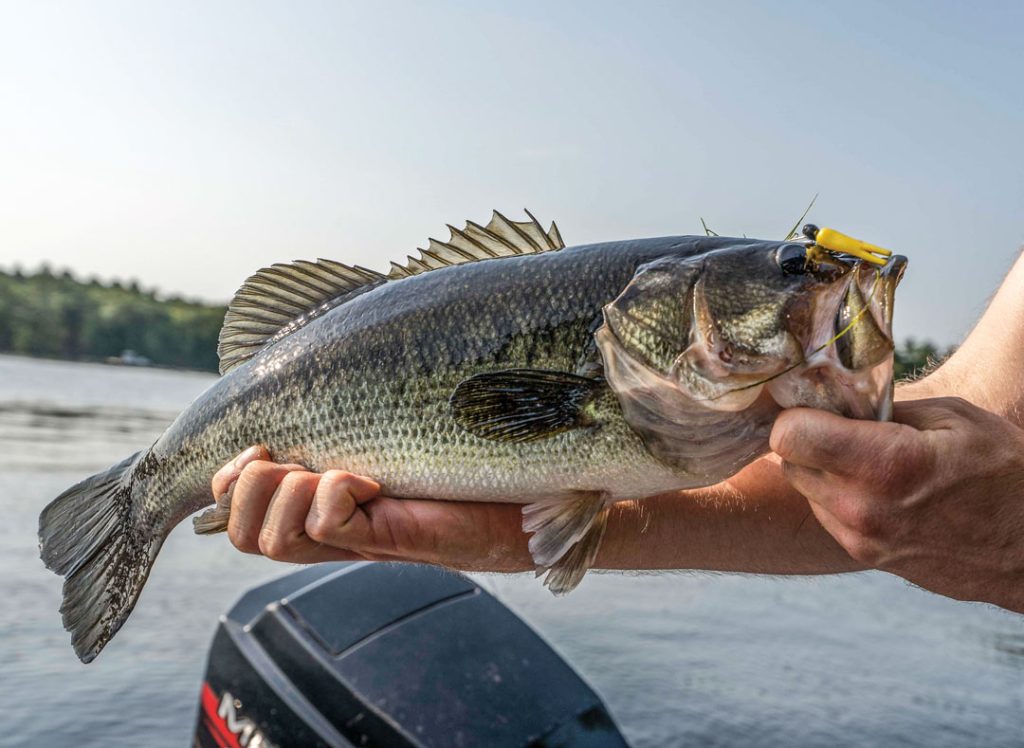
In full disclosure, when it comes to largemouth specifically, I like to use my time on the water as an escape. As a full-time fishing writer and photographer who spends thousands of hours pushing myself while pursuing stripers and back-country species, I need a lighthearted, fast-paced, semi-simple fishery for escape. Largemouth are so accessible, and moderately sized ones are relatively easy to catch, that it’s a great, local, low-stakes, fast-paced angling option. The added challenge and thrill of landing them on really light gear makes it rewarding for me as well.
(Note: On The Water is reader-supported. When you buy through links on our site, we may earn an affiliate commission.)
Making the Most of Your Ultralight
I want to state very clearly that using ultralight setups doesn’t mean using teeny-tiny lures. With my ultralight setup, I use the same lures that I would if I were using traditional medium-action gear. Many anglers may assume that ultralight gear means you are limited to tiny lures, and that couldn’t be further from the truth.
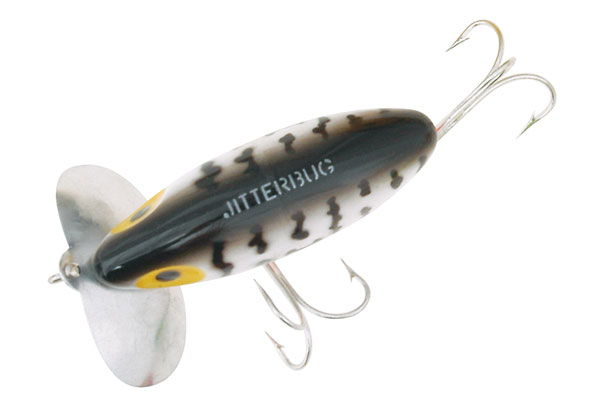
That being said, to help make up for my inability to throw really big lures with the ultralight, I consider how vibration and sound can create the illusion of a bigger bait. Fish are more sensitive to sound than visual sight, which plays into their feeding and hunting behavior. This is why I absolutely worship wake baits. The low-frequency vibration a wake bait produces mimics bait much larger than the lure’s physical dimensions, while the surface wake also hides its profile. This allows me to easily cast small lures while also presenting a large profile.
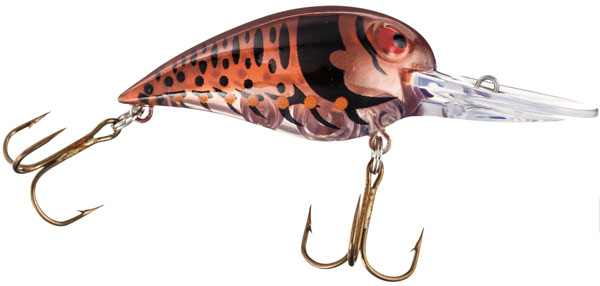
Some good options include the classic Jitterbug, the Strike King KVD 2.5 Wake Bait, and my personal favorite, the long-retired super-shallow Storm Wiggle Wart. Another option is using a basic walk-the-dog lure. The long, cylindrical shape gives off the presence of a larger bait but remains very easy to cast with light gear. It works great day and night.
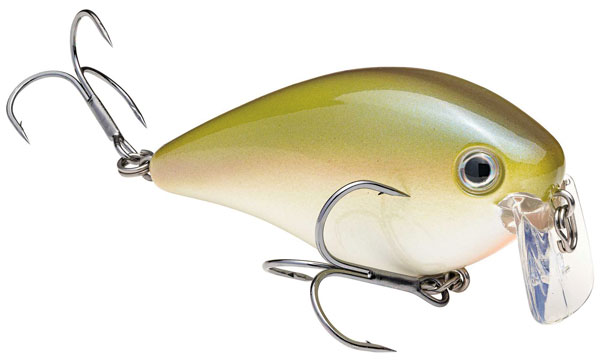
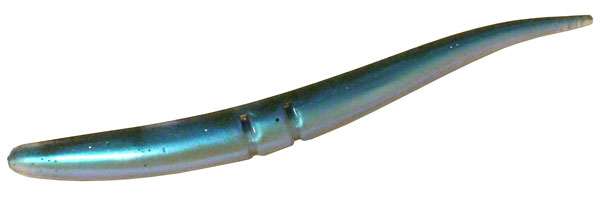
My other “ultralight-compatible” lures are weightless Lunker City Slug-Gos, Mepps Aglia spinners, and small spinnerbaits. Rigged with a non-offset weedless hook, the 6-inch Slug-Go is a good option because it again mimics a pretty big profile while remaining easy to cast. As a bonus, the sensitivity of a light setup makes working the Slug-Go extremely easy.

The Mepps is my final essential because it is very easy to cast long distances, and I can fish it high and fast or low and slow, and (perhaps most important) the spinning blade makes such a racket underwater that I assume the fish are perceiving it as something much larger than it actually is.

Of course, you can always use really small lures, which has some serious advantages. Fussy bass seem to respond best to lures at either end of the size spectrum, and highly pressured or sluggish fish may sometimes be coaxed with very small offerings. Also, if the lunkers are feeding on tiny bait, using an ultralight makes it much easier to cast and work lures. For example, I once was on a smallmouth bite where 3- to 5-pound fish were rooting out small crayfish, smaller than an inch. Using an ultralight rod and a tiny panfish jig, I was able to lightly tap it along the bottom and rustle up a bunch of seriously charged-up fish. There would have been no way to cast that same jig on 10-pound-test mono and a medium-action rod.
Braid or Bust, Over-leadering, and Soft Rods
There are really three major downsides to an ultralight setup (and some minor ones not worth mentioning). No, it’s not the power of the rod and reel. In most situations without extremely heavy cover—like dense lily pads or fishing a submerged forest—there is plenty of fish-fighting power for all but the most exceptional fish. Instead, the three challenges I perceive are presenting large profiles, casting distance, and line strength and durability. The first I’ve addressed—choosing small lures that give the impression of larger prey—and the second and third can be addressed by using braided line and a fluorocarbon leader.

I switched to 6- and 8-pound braid from 4-pound mono, and I can’t imagine ever going back. With modern braids, you can cast 3/8-ounce lures so far that you have to start worrying about line capacity on 500-size reels. Even more fun, the sensitivity of braid with an ultralight rod is outrageous. You can feel every tiny movement, so it’s hard to go back to heavier gear once you start getting used to it. However, you don’t even need to go super light—15-pound braided line has an equivalent diameter to 4-pound monofilament. Sure, you’ll be seriously over-lining a typical ultralight rod and shifting the burden to the rod and drag, but I think this is where the load should be distributed with ultralight setups anyway.
I further offset the limited durability of ultralight line by using a heavier, longer leader. I often use 15-pound fluoro and bump up to 20 pounds if needed. While it’s a pain to cast, I typically use 20- to 25-inch leaders. One downside to this is the potential suppression on the action of small lures. Regardless, an easy remedy is to use a high-quality snap and swivel. There are some incredibly small snap-swivels that are rated at well over 20 pounds.
You can eliminate any trace of your leader by using fluorocarbon. This technology has taken some big jumps in the last few years, so gone are the days when you had to accept really hard, stiff lines that were tough to tie knots with. I have recently started using Seaguar Premier, and it’s amazing for light-tackle freshwater use. It’s not cheap, but it is astoundingly thin and easy to work with. It may not be the most abrasion resistant, but if you’re using 4- to 12-pound braid, leader durability and abrasion resistance is not going to be the weak link in your chain.
Another way to help address your light line limitations is by using a soft rod. Many anglers shy away from very “whippy” rods because they cast relatively poorly and don’t feel very powerful in the shop. However, soft rods that bend deep into the blank provide a phenomenal shock-absorber for use with light braided line, which has no stretch. The rod’s action compensates for aggressive hooksets, sudden changes in direction from the fish, or even hoisting fish out of structure. While my 6-foot trout rod feels extremely light, its soft action stores a lot of power, just like a spring. I can really yank on a fish without the risk of snapping the rod, the line, or pulling a hook. And, it’s also very entertaining to use—a very serious bonus.
Related Content
Article: Strategies for Largemouth Bass in March
3 on “Ultralight Largemouth”
-
Jim Taff Started doing this in the 60’s – strip mine pits in IL – Bass tournaments 70s 80s and early 90s. Switched to saltwater in 2006 and have caught a lot of nice trout, redfish and flounder along with a few others sheepshead, tripletail and sharks. Currently using 7 ft ultralight rods with 1000 reels with 8-10 braid and 8-10 mono or flouro leaders. Use mostly 1/32 to 1/8 jigs around Brunswick GA!
-
Chris Outstanding article on light tackle and rods for Bass fishing. I follow these methods on my two acre pond I fish in my neighborhood in Massachusetts.
-
Will Have loved ultralight fishing for a long time – not just for bass, but for trout and big fatty bluegills, panfish in general are a lot of fun to catch on ultralight. Will definitely switch my bass set up to smaller braid and fluoro from the 4lb or 6lb mono I normally use.
Would love a few rod+reel recommendations in an article like this!
Leave a Reply